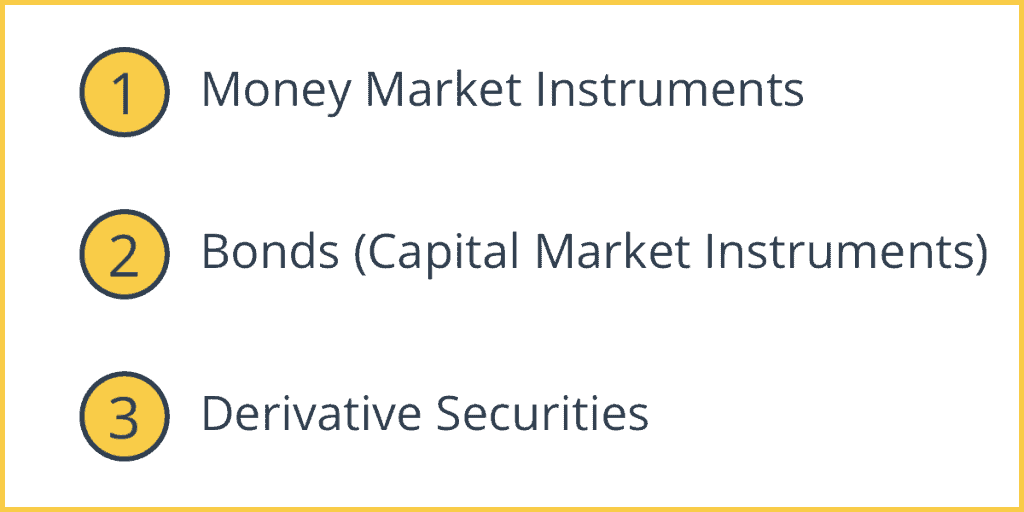Financial Instruments are tradeable assets (claim) for people who hold them and liabilities (obligation) for the issuer. Securities such as bonds, stocks, bank loans are examples of financial instruments. For a $1000 government bond: The government owes $1000 to the holder & the government has to pay interest.
A Financial Instrument is more valuable:
- If payments made are larger
- Payments are made sooner
- More likely to be made
- Made when needed the most
How Financial Instruments Get Value
1. Derivative Financial Instruments
Derivative Financial Instruments that derive their value from the underlying instrument. For example: Stock Options
2. Cash Instruments
Cash instruments get their value directly by the markets. They can be securities such as loans and deposits, where both borrowers and lenders have to agree on a transfer.
3. Debt Securities
Debt Securities are tradable financial instruments that pay interests.
Types of Financial Instruments

1. Money Market Instruments
These are short-term and their maturity is usually less than 1 year
For example, Commercial paper, treasury bills (federal govt. debt), short-term municipal debt, re-purchase agreements (repos), euro dollars.
2. Bonds (Capital Market Instruments)
These are long-term and their maturity is greater than 1 year.
For example, corporate bonds, treasury bonds (finance national debt), municipal bonds (finances substantial and long-term capital projects), stocks, mortgage loans, consumer loans & business loans.
Stocks: holder has a claim on assets and dividends
3. Derivative Securities
It is a type of financial instrument whose price depends on the value of the underlying security
Options – there are two types of options
- Call – option to buy shares at a set price on a set date
- Put – option to sell shares at a fixed price on a set date
Futures – one party agrees to sell a particular good to another party at a set price at a future time.
Uses of Financial Instruments
1. They act as a store of value. For example: Life insurance
2. They reduce trade risk.

